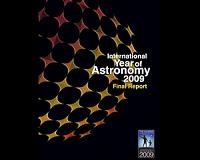 |
Lisbon, Portugal (SPX) Sep 13, 2010 Ricardo Amorin has presented a talk at the Joint European and National Astronomy Meeting (JENAM 2010) explaining the nature of strange so-called Green Pea galaxies. First discovered in 2007 by amateur stargazers, it has now been shown that these extraordinary and extremely compact star cities have low amounts of complex elements after being diluted by streams of gas and strong supernova winds. This announcement will be celebrated by the amateurs who first discovered Green Pea galaxies. Lead scientist Ricardo Amorin says, "This Green Pea discovery is a fabulous example of how normal citizens, 'astronomy lovers', can help scientists with their collective efforts. They discuss the science with professional astronomers, and have written an excellent Wikipedia entry about Green Pea galaxies which presents a lot of information to people of the world." Green Pea galaxies were first classified by hobby stargazers. The online project Galaxy Zoo and Galaxy Zoo 2 asked interested members of the public to help sort through a vast depository of night sky images produced by the Sloan Digital Sky Survey. Categorizing galaxy types is both important to learn about the evolution of the Universe, and also difficult because of the ambiguous shape of many. Astronomers turned to the online community for help, and citizen scientists flocked to sift through the images and look for galaxy types. Within 24 hours of launch the site was receiving an astonishing 70,000 classifications an hour. These citizen scientists discovered a strange type of galaxy that did not fit with previously known types. Small in size and green in color, they were soon named "Green Pea" galaxies. They appear to be compact low-mass galaxies undergoing intense star formation, and being around 1.5 to 5 billion light-years distant indicates that this is a brief but extreme stage of their evolution. Green Pea galaxies are now known to be "metal-poor"; metals in this astronomical sense meaning any element other than hydrogen and helium. The study suggests that gas gravitationally attracted from the outskirts of the Green Pea galaxies or beyond, combined with shockwaves from supernova explosions, are likely causes. Amorin explains, "Discovering Green Pea galaxies has opened a new window to investigate galaxy evolution and star formation in the early Universe." Green Pea galaxies aren't the only citizen science successes to come from Galaxy Zoo. In 2007, Dutch school teacher Hanny van Arkel was categorizing galaxies for the project when she came across a very strange object. This was soon named Hanny's Voorwerp, from the Dutch for "Hanny's Object". This strange phenomenon baffled scientists, and it was only in June 2010 that a possible explanation - a supermassive black hole in a nearby galaxy emitting radiation and making a cloud of gas glow - was provided. The community of amateur astronomers have cooperated to make an educational webcomic about this adventure, called "Hanny and the Mystery of the Voorwerp". Amorin concludes, "The Galaxy Zoo volunteers have put science very close to the citizens. This is an active and powerful way to spread science." The latest incarnation of Galaxy Zoo uses data provided by the famous Hubble Space Telescope, to peer deeper into the Universe than before. Perhaps even more citizen science discoveries are just around the corner.
Share This Article With Planet Earth
Related Links JENAM2010 Astronomy News from Skynightly.com
 International Year Of Astronomy 2009: Final Report Released
International Year Of Astronomy 2009: Final Report ReleasedParis, France (SPX) Sep 08, 2010 A 1300-page final report for the International Year of Astronomy 2009 was released at the European Week of Astronomy and Space Science in Lisbon, Portugal. The report shows that at least 815 million people in 148 countries participated in the world's largest science event in decades. We have to go back more than 40 years, to the Apollo Moon programme, to find another science event that has ... read more |
|
| The content herein, unless otherwise known to be public domain, are Copyright 1995-2010 - SpaceDaily. AFP and UPI Wire Stories are copyright Agence France-Presse and United Press International. ESA Portal Reports are copyright European Space Agency. All NASA sourced material is public domain. Additional copyrights may apply in whole or part to other bona fide parties. Advertising does not imply endorsement,agreement or approval of any opinions, statements or information provided by SpaceDaily on any Web page published or hosted by SpaceDaily. Privacy Statement |